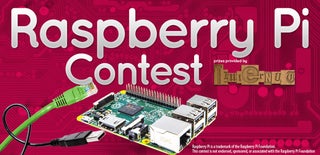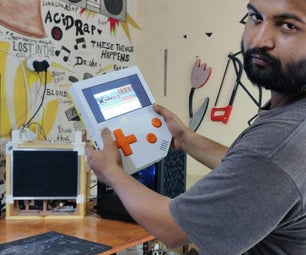Introduction: Antique Radio Into an Airplay Speaker
My father-in-law is a musician and a lover of mid-century modern design. I have an obsession with tinkering. Somewhere in that mix lies the perfect gift and the perfect challenge. After taking a couple of trips to antique stores and reading a few Intructables, I came to the conclusion that I should turn an old mid-century radio into an Airplay speaker with the help of a Raspberry Pi. What better gift could there be for a lover of music and mid-century design?
Before we go further let me say that I am by no means an electrical anything. I know amps kill, capacitors will hold a charge, being shocked hurts, and the wife gets very angry when you trip the breaker. So I'm sure there's a better more professional way to do this. This is just my whiskey-fueled 1 am design. :)
Materials:
- Old radio
- Raspberry Pi B+
- 8GB SD Card
- 5v ac adapter
- Pi Case (optional)
- 18ga Wire
- Spare USB Speakers
- Soldering Iron
- Low heat solder
- Wire Cutters
- Hot Glue
- Dremel with cutting wheel
Step 1: Tear It Apart
This is the fun and easy part: disassembly. When you're taking any unknown thing apart it's always helpful to take lots of photos to reference where screws and parts go. It's also useful to store the bits in sandwich bags labeled by where they go. Or if you can, screw back into where they came from.
This radio was built in 1943 and it has 70 years worth of dust and grime in it. So I popped off the back and clipped the antennae wire. I'm not rebuilding the radio so I won't need it.
Then I pulled the guts out. The resistors were made of paper and wax....cool. Most of those are going to be removed to make room for the replacement parts. Anything big and bulky was snipped and trashed.
Step 2: Clean Up
Even though I'm not using the majority of the original parts I wanted to keep some of them in there. Cause hey...tubes look cool.
A little bit of rubbing alcohol and some wipes later...pretty as the day it was built.
Step 3: The Engineering
Here's where it starts to get interesting. There were 3 things i wanted to accomplish.
- Reuse the original speaker for that authentic sound
- One of the knobs had to at least turn the thing on
- The interior light had to work
Like I forewarned I'm not an electronics anything...just a guy who knows enough to get in trouble.
The hurdles
- To reuse the original speaker I needed an amp
- To power the interior light I needed a 120v power source
- The Pi only needs 5v
- I didn't want 2 power cords
Step 4: Power
Okay, to make the volume button at least a little bit useful I decided to at least have it turn on the Raspberry Pi and the original interior light. To the best that I could follow, the light was wired directly to the on/off button. Simple enough.
The Pi however needed to go through an adapter to reduce the voltage down from 120v to 5v. So what to do? Why, crack the adapter open and wire it straight to the on/off switch of course!
I used a small cut-off wheel to cut a small passage for a couple of 18ga wires to run through. I soldered one end to the power input on the ac adapter and the other ends to power switch for the radio. I closed the ac adapter case back up with a bit of hot glue.
The adapter would fit neatly into the bottom of the tube board after removing the large resistors. I then glued the whole adapter into place as well. The excess cable from the adapter fit neatly beside it so I only needed a few inches to make it to the Pi.
Now with a turn of the switch the interior light would come on and the Pi would boot up.
Step 5: Sound
To be honest I have no idea how tube radios work. I know tubes amplify or convert current and that's about it. So I decided to cheat and skip making the tubes work. :)
Instead I used the circuit board out of a pair of old USB powered laptop speakers. Which worked great. The board was small enough to fit inside the radio and it would draw it's power from the Pi. All I had to do was cut off the wire from the small speaker and solder the leads to the original speaker in the radio.
*Just a warning that the circuit board will short out and make a buzzing sound if it's touching the metal interior of the radio. So be sure to insulate it!
There is also the option to add better audio outputs from HiFiBerry. These were not super expensive but fell outside of my budget for this project. I may look into these as an upgrade for the radio in the future.
Step 6: Setting Up the Pi
Luckily I was able to stand on the shoulders of giants for this one. Chris Swan has a great blog post about Airplay the easy way. I followed his directions and they worked great. These cover installing the OS to an SD card, setting up your network (wifi in my case), and enabling Airplay.
AirPlay on Raspberry Pi the Easy Way
The build of OpenELEC he uses is no longer the current version. I was able to use the stable 5.0.8 ARM11 build.
OpenELEC has lots of cool options if you wanted to use it to AirPlay video or access the internet. I only needed the audio for this setup and it was really easy.
The only change I made was renaming the AirPlay device from the default to something more personal for my father-in-law. When you enable AirPlay you will see the option to change the display name.
Once the OS was up and running I piled everything back into the radio. A little hot glue will hold everything in place and is easy enough to remove if I have take out the Pi for service.
Step 7: The Finished Product
The end result was a cool little Airplay speaker with a touch of old school class. The sound is pretty good for a 60 year old speaker. It isn't the loudest, but I guess that's why people used to gather around the radio....they weren't Dolby back in the day.
I will say the Pi is a little slow. It takes about 30 seconds or so to fully boot up and there is a little bit of lag when you switch songs. But it is still a great device and I'm so glad I was able to make this work. Father-in-law is proudly displaying in his living room.

Runner Up in the
Raspberry Pi Contest







